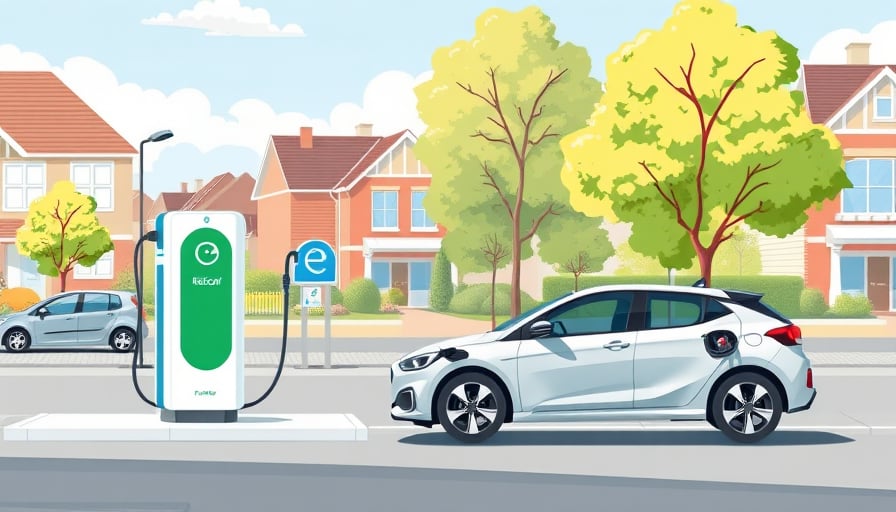Wallbox NV: Strategic Positioning Amid Rising EV Adoption and E‑Vehicle Incentives
Wallbox N.V., a Dutch specialist in electric‑vehicle (EV) charging solutions, is poised to benefit from a confluence of market forces that are accelerating the transition to electric mobility. The company’s portfolio, which blends cutting‑edge technology with elegant design, positions it to capture demand from OEMs, fleet operators, and individual consumers alike.
1. Polestar’s “Ladebonus” and the Direct Push for Wallbox Solutions
Polestar, the Swedish automaker, has introduced a new “Ladebonus” incentive for customers ordering the Polestar 3 or Polestar 4. Buyers can choose either a free Wallbox or a complimentary year of the Polestar Charge roaming service. The offer is designed to lower the barrier to EV adoption by ensuring that owners have access to reliable, high‑quality home‑charging infrastructure from the outset.
For Wallbox, this partnership is significant on several fronts:
- OEM End‑to‑End Integration – Polestar’s decision to bundle a Wallbox with new vehicles signals confidence in Wallbox’s technology as a core component of the charging ecosystem.
- Market Exposure – The incentive will drive immediate sales of Wallbox units, generating a spike in revenue and expanding the company’s presence in the high‑growth Scandinavian market.
- Brand Association – Aligning with a premium brand enhances Wallbox’s perception as a provider of sophisticated, user‑centric charging solutions.
The move also dovetails with Wallbox’s global strategy to deliver seamless communication between user, vehicle, grid, building, and charger—an integration that is increasingly demanded by OEMs seeking to differentiate their electrified line‑ups.
2. Vehicle‑to‑Load (V2L) and Plug‑&‑Charge Capabilities in Upcoming Peugeot Models
Peugeot’s forthcoming E‑308 and E‑308 SW will feature V2L and plug‑&‑charge functionalities slated for release in early 2026. While these features are primarily vehicle‑centric, they underscore a broader industry shift toward bidirectional power flow and effortless charging. Wallbox’s architecture, which supports bidirectional charging and offers advanced user interfaces, is well positioned to complement such vehicle capabilities.
Key implications for Wallbox:
- Increased Demand for Bidirectional Infrastructure – As more OEMs integrate V2L, the need for compatible home and commercial chargers that can safely manage two‑way power flows will grow.
- Software Ecosystem Synergy – Wallbox’s software platform, already designed to manage complex charge schedules and grid interactions, can be leveraged to support V2L use cases, enhancing its value proposition to fleet operators.
- Competitive Edge in Plug‑&‑Charge – The ability to enable automatic authentication and payment through the vehicle’s systems aligns with Wallbox’s plug‑&‑charge roadmap, giving it an advantage over competitors that rely on manual charging station management.
3. Fiscal Reforms and Their Impact on Corporate Fleet Charging
The German federal government’s November 2025 directive marks the end of the generous tax‑free reimbursement regime for home charging of company‑owned EVs. From 2026, employers must provide exact proof of electricity usage to retain tax‑free status. This regulatory shift presents both challenges and opportunities:
- Increased Administration for Fleet Managers – Companies will need robust monitoring solutions to track and document charging events accurately. Wallbox’s real‑time billing and audit‑ready reporting capabilities directly address this need.
- Potential Upsell of Enterprise Solutions – As firms seek to mitigate compliance risks, they may invest in integrated charging platforms that combine hardware, software, and support services. Wallbox’s enterprise portfolio, which includes scalable installation, maintenance, and data analytics, is poised to capture this market.
- Policy‑Driven Incentives – The government’s plan to offset the tightening rules with passenger‑tax relief for EVs may stimulate further fleet electrification, thereby expanding the addressable market for Wallbox’s products.
4. Financial Snapshot and Market Outlook
As of 20 November 2025, Wallbox traded at USD 3.04, a fraction of its 52‑week high of USD 7.83 reached in early October. The company’s market capitalisation sits at approximately USD 47.3 million, reflecting modest valuation in the face of growing demand. The negative price‑earnings ratio indicates that earnings are still below market expectations, a common trait for firms investing heavily in growth.
Given the current trajectory of EV adoption, the convergence of OEM incentives, vehicle‑centric charging innovations, and tightening fiscal frameworks, Wallbox is positioned to accelerate revenue growth through:
- OEM Partnerships – Expanding beyond Polestar to other automakers seeking to embed high‑quality charging solutions.
- Enterprise Expansion – Targeting fleet operators and commercial real‑estate owners who require scalable, compliant charging infrastructure.
- Software Monetisation – Leveraging data and connectivity to generate recurring subscription income.
In summary, Wallbox’s technology stack and strategic focus align closely with the evolving landscape of electric mobility. The company’s ability to deliver end‑to‑end charging solutions, coupled with a forward‑looking product roadmap that embraces bidirectional power flow and seamless user experience, positions it as a pivotal player in the global shift toward sustainable transport.




